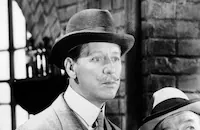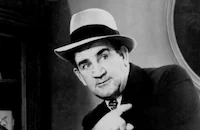The characters and domestic comedy plot of the comic strip "Blondie" were the basis of a popular 28-film series of B movies produced by Columbia Pictures between 1938 and 1950. The Chic Young strip debuted in newspapers in September 1930, following the relationship of a flapper called "Blondie Boopadoop" who marries wealthy playboy Dagwood Bumstead. The Bumsteads disapprove of Blondie and disinherit Dagwood when the couple marries, so he goes to work at a construction company owned by Mr. Dithers.
The first film, Blondie (1938) was a surprise hit, and the studio decided to turn it into a series, but after five years, Columbia had grown tired of the Bumsteads. The audience's negative response to the cancellation was so strong that the studio was forced to bring it back. The Blondie series ended when Columbia could not agree on a new licensing contract with King Features, the syndicate that owned the rights to the comic strip. Blondie had another life on radio and then briefly on television later in the 1950s.
The movie series starred Penny Singleton and Arthur Lake as Blondie and Dagwood. After doing several radio episodes, Singleton left the show and was replaced by Alice White, Ann Rutherford, and Lake's real-life wife, Patricia van Cleve. Pamela Britton played the title character opposite Lake in the 1958 TV series. Singleton later provided the voice of Jane in the 1960s TV series The Jetsons and Jetsons: The Movie (1990).
The comic strip appears in newspapers to this day, drawn by Dean Young, son of Chic Young, who drew the strip until he died in 1973.
Blondie in Society (1941) airing 11/6/21 at 9:15 pm
Blondie Plays Cupid (1940) airing 11/6/21 at 8:00 pm
Blondie’s Blessed Event (1942) airing 11/6/21 at 10:45 pm
























